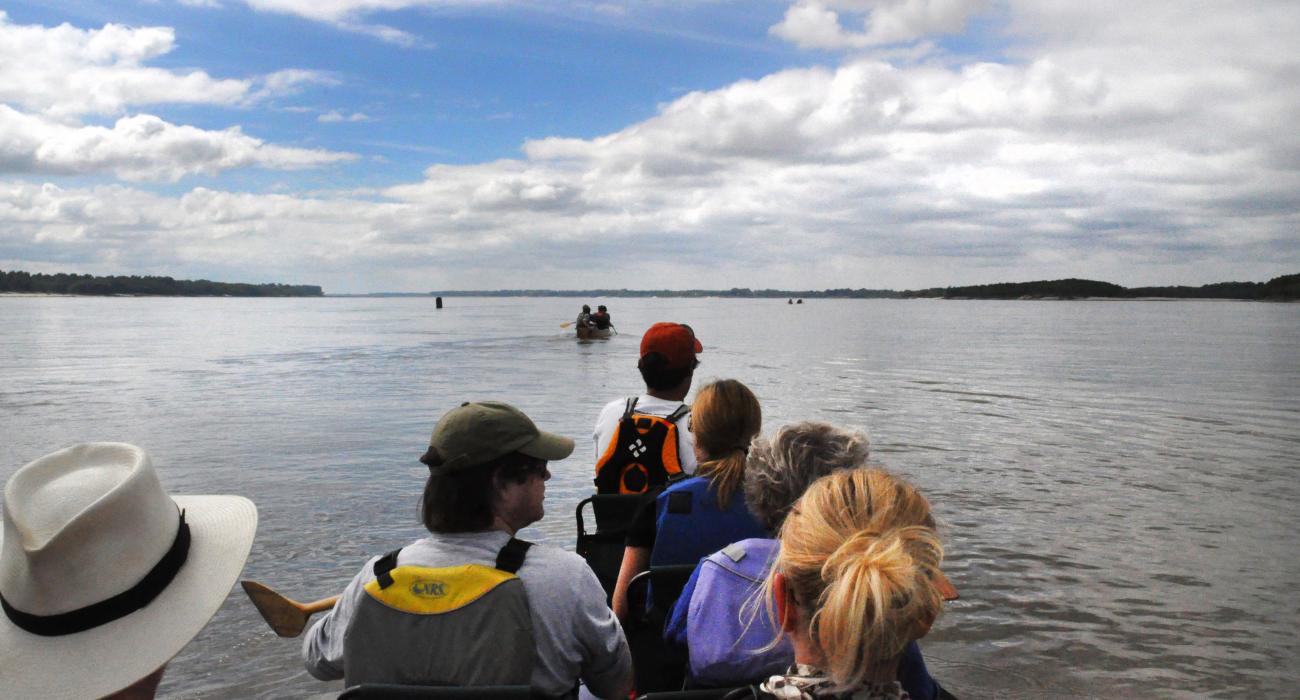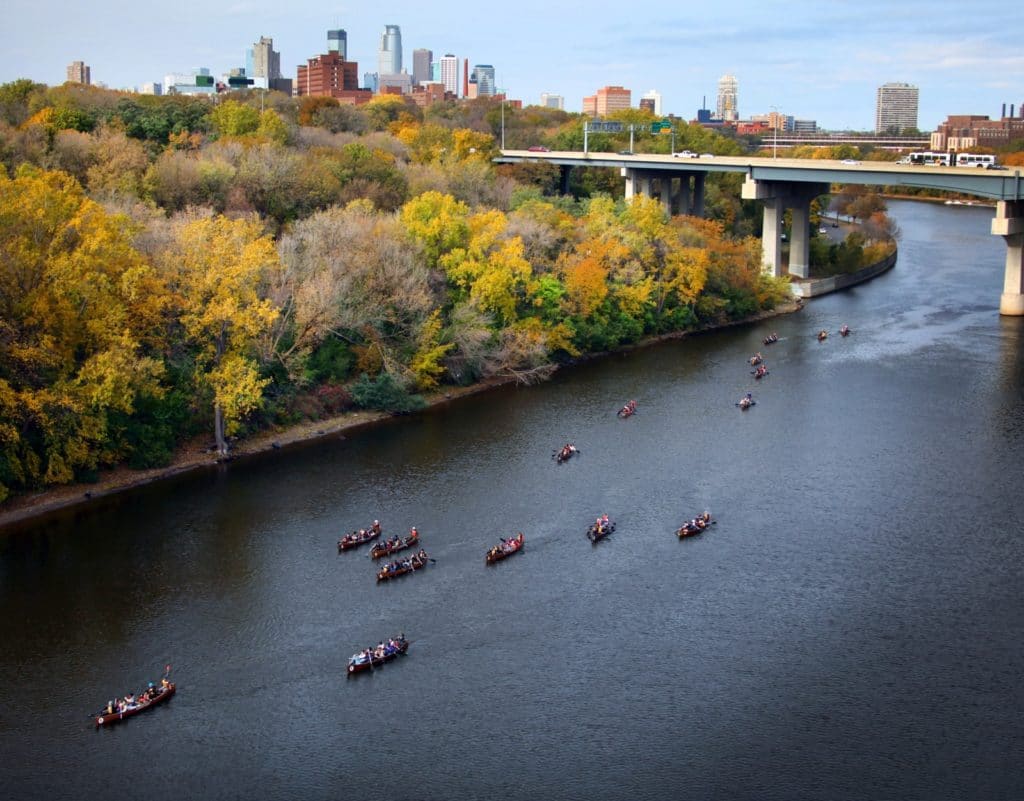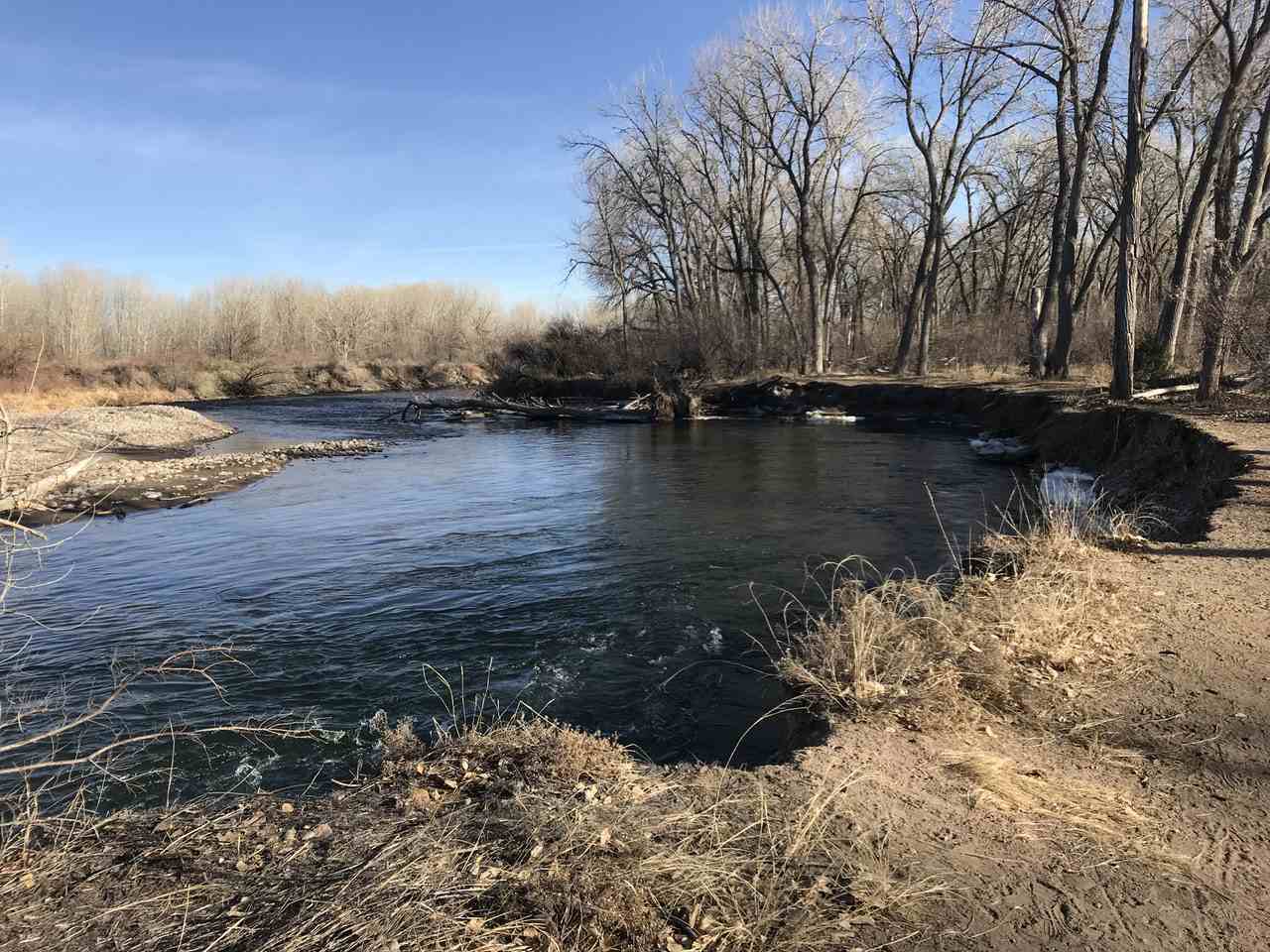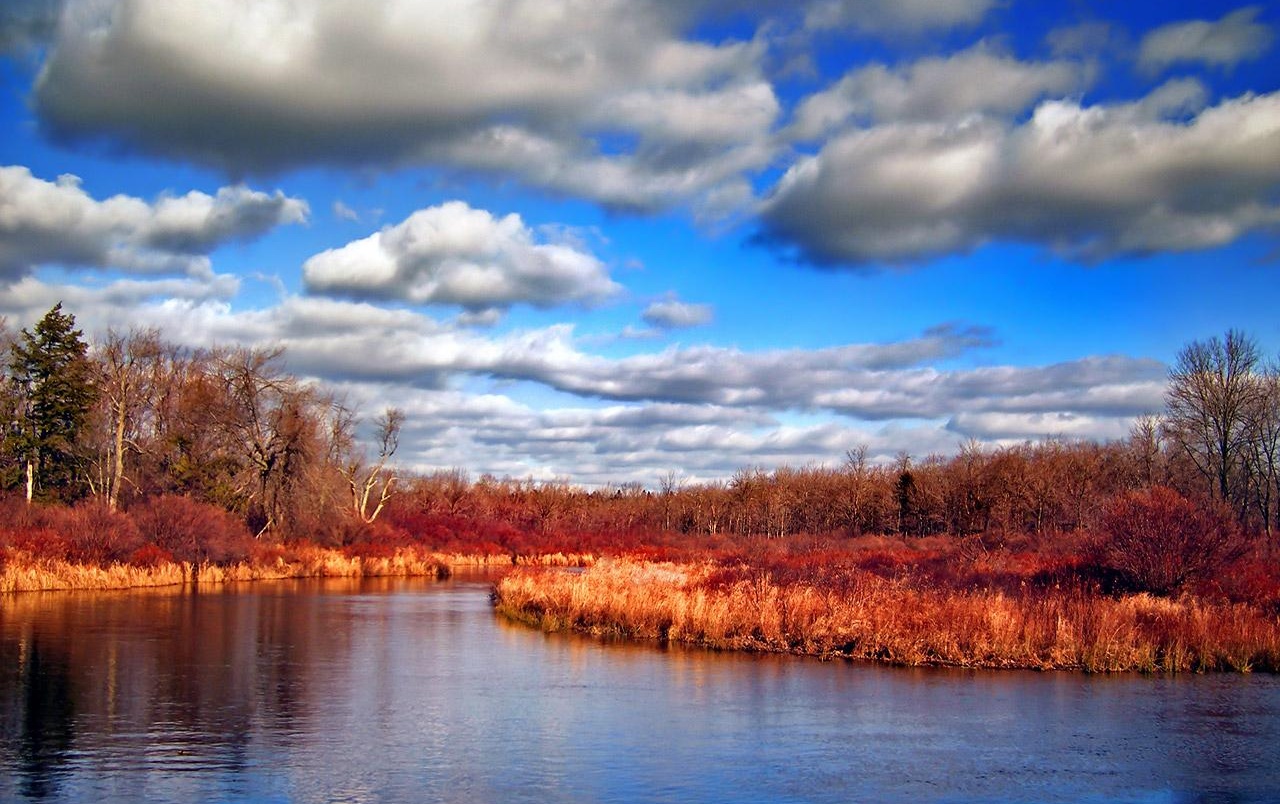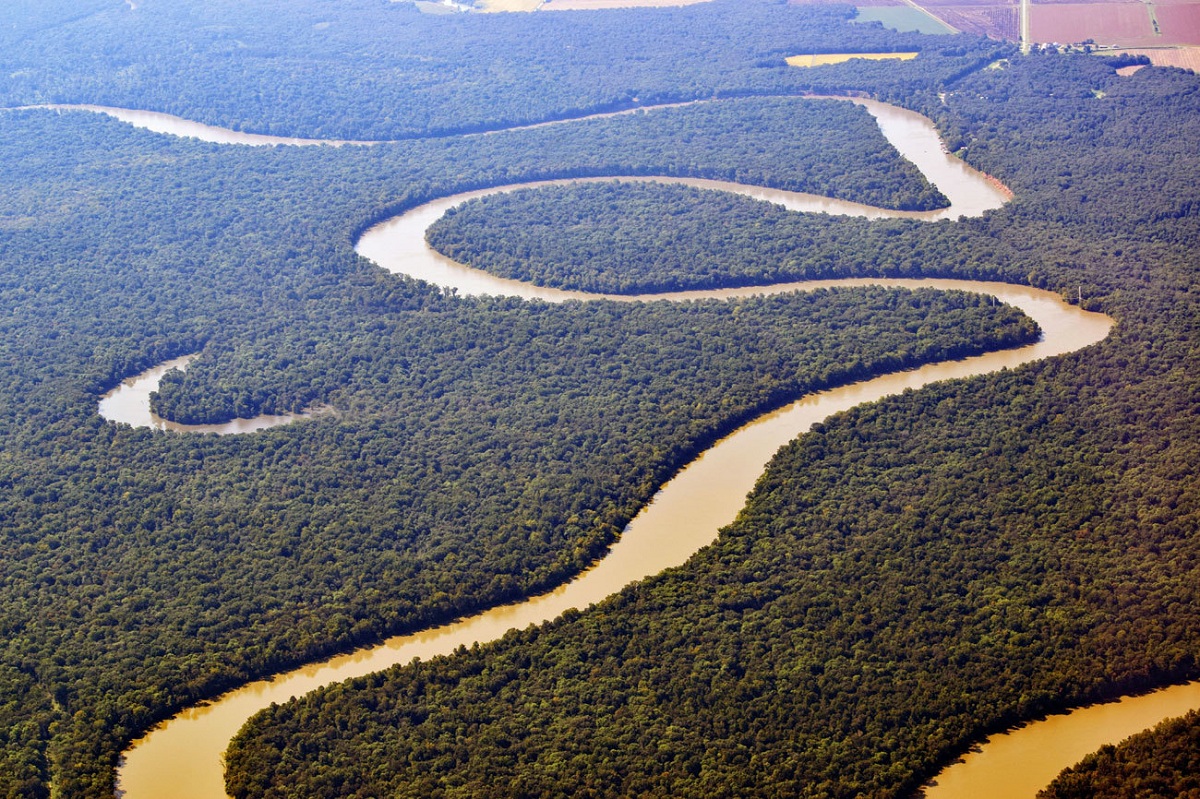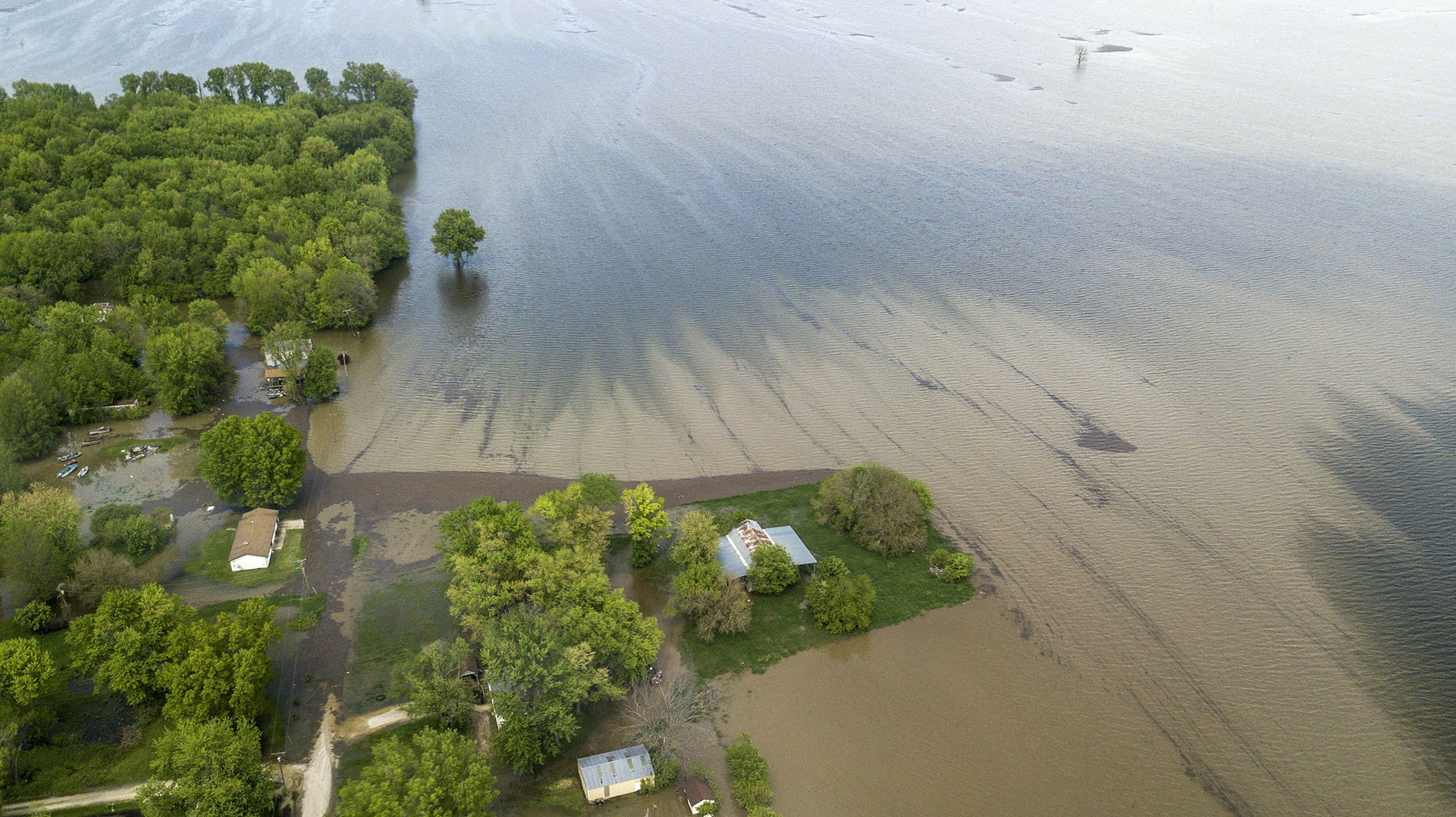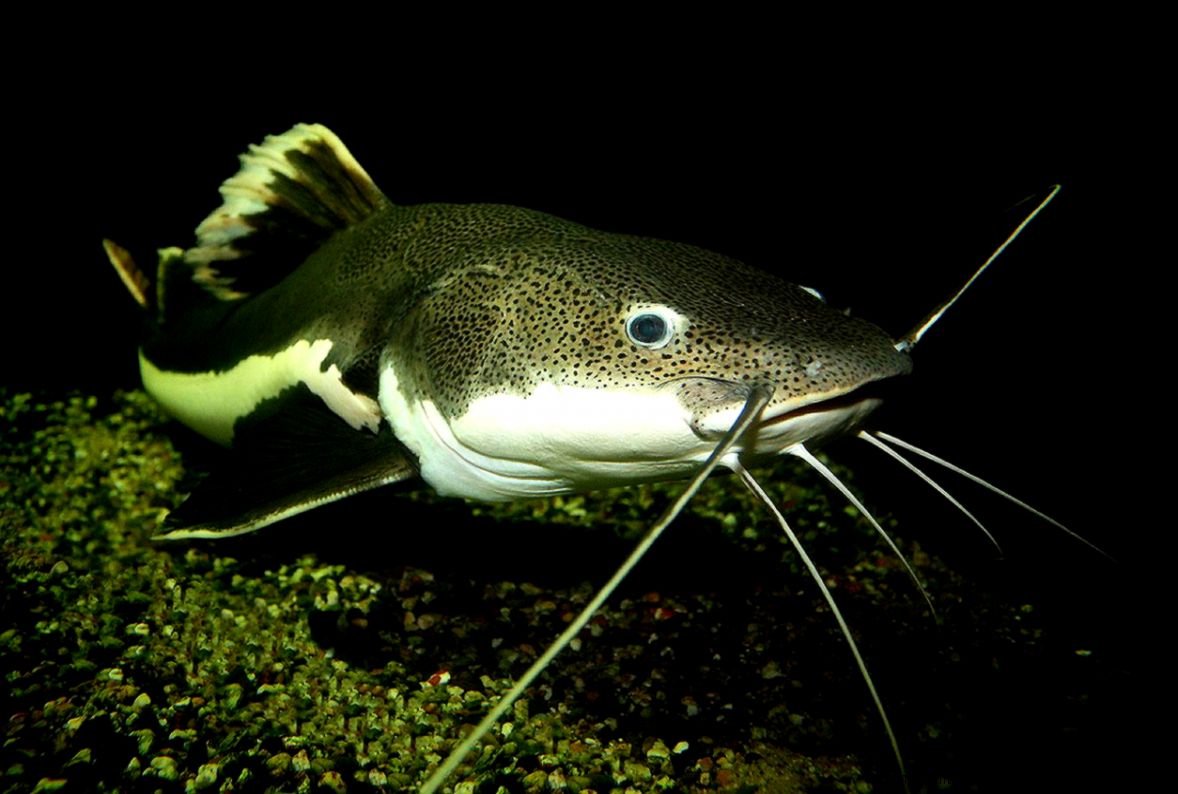El Mississippi River It is the largest in North America, it has its origin in an elevated and swampy region covered with small lakes, located west of Lake Superior, near the Canadian border, it runs through the United States and flows from north to south. Learn more about this river in this post!

What is the Mississippi River?
The Mississippi River is the largest river in North America, with its important tributaries running through an area of more or less 1,2 million square miles (3,1 million square kilometers) with one eighth of the entire continent. The Mississippi River is located entirely within the United States.
The Mississippi River is one of the world's major river systems in size, habitat diversity, and biological productivity. It is also one of the world's major commercial waterways and one of North America's great migration routes for both birds and fish.
Native Americans lived along its banks and used the river for sustenance and transportation, early European explorers used the Mississippi to explore the interior and far north of what would become the United States. Fur traders plied their trade on the river and soldiers from various nations garrisoned troops at strategic points, at various times, along the river when the area was still on the border.
The Mississippi watershed is even more impressive, a watershed is the entire area from which water, both above and below ground, drains to a single location, the Mississippi watershed includes all the land from which water drains through from the delta to the mouth of the river in Louisiana and to the Gulf of Mexico.
It includes 31 states in the US and two provinces in Canada and in total covers an area of 1.2 million square miles. This represents 40 percent of the 48 states.
The Mississippi River is important to humans and wildlife. Millions of people depend on the Mississippi and its tributaries for fresh water and waste discharge. There are 260 species of fish that call the river home and 60 percent of all birds in North America depend on the river basin full time or during migration.
Those born in the United States lived around the Mississippi River, many were dedicated to hunting, only a few, such as the experts in construction of elevations of the land, constituted fertile peasant societies, later the arrival of the Europeans in the sixteenth century shaped the way in who lived, beginning with the way of hunting of the first explorers, later the settlers, took risks in the agriculture of more fertile lands.
Made up of large layers of swampy river soil, the mouth of the Mississippi is one of the most fertile in the United States, steamboats coming to light on that river in the XNUMXth century to send agricultural and industrial services.
During the American Civil War, the capture of Mississippi by Allied forces marked a turning point for victory, due to the strategic importance of the river to the Confederates of the war.
Characteristics and Location
The Mississippi River is more than XNUMX kilometers long, but, combined with the Missouri, one of its most important tributaries, it reaches and exceeds XNUMX kilometers, making it one of the most important rivers in the world.
https://youtu.be/m4UIDcghHMM
The Mississippi River travels through very different territories, the initial part flows between moraine rocks that form waterfalls and rapids like those of San Antonio, near Minneapolis. The power plant, however, traverses floodplains formed by the overflow of the Mississippi that occurs periodically where the river hangs out.
The river can be divided into two segments: the upper from Lake Itasca to the confluence with the Ohio Tributary; the lower part that goes from Ohio to the delta. Another geographical feature is dictated by the meanders that stand out in the part between Memphis and the mouth.
Although the Mississippi can be ranked as the fourth longest river in the world by adding the length of the Missouri-Jefferson, for a combined length of 3,710 miles (5,971 km), the 2.340-mile length of the Mississippi proper is comfortably exceeded by 19 other rivers.
However, in discharge volume, Mississippi's rate of approximately 600,000 cubic feet (17,000 cubic meters) per second is the largest in North America and the eighth largest in the world.
The Mississippi has a length of 3.734 km, but is often considered together with its tributary Missouri, which in turn receives the Jefferson, these 3 rivers form a large river complex and are therefore often considered as a single river, with a total length of 5.970 km.
For this reason, the Mississippi is often considered the third longest river in the world, even in retrospect, if we consider it alone, its course is much shorter, to conquer the first place among the longest rivers on the planet, as we have already seen. , is he Amazon River, immediately followed by the Nile.
Mississippi's most important feature is its flow, which far exceeds the average flow of any river flowing in regions with a temperate climate. Of course, compared to the Amazon River and the Congo River, the flow of this waterway is nothing exceptional.
However, it must be considered that Mississippi is not located in an area characterized by abundant rainfall and this is a determining aspect. In addition, the flow of this river varies according to the region it crosses and we can say that it goes from 8,000 m³ to 50,000 m³.
¿Where does the river flow?
It empties into a delta in the Gulf of Mexico, it can be divided into two very distinct parts: the upper Mississippi, from its source to its confluence with the Ohio, then the lower Mississippi, to its mouth, the lower segment of the river forms many meanders from memphis: swamps and dead ends.
The Great River Road has been running the Mississippi since 1938 through all ten states, long-distance travelers who are seasick will be delighted to go down the river by road: from north to south, the landscapes are highly contrasted, there are many sites historical, also museums and national parks.
Length
The Mississippi River has a history as long as its own length, this 6.275 km long river in the northern United States is the fourth longest in the world, the first longest in the country of Uncle Sam and the second longest in the North Hemisphere.
Few know it, but Mississippi is shared between Canada and the United States. 98.5% of its area is on the US side, while 1.5% is on the Canadian side, plus it flows into the Gulf of Mexico.
The Mississippi begins at Minnesota's Lake Itasca, visitors can see the headwaters and cross the river on foot, where it is only 18 inches deep. While there are different numbers depending on the source, the Mississippi National River and Recreation Area lists the length of the Mississippi as 2,350 miles, it is the second longest river in North America, second only to the Missouri River.
You'll find the Mississippi at its narrowest point at its headwaters at Lake Itasca, where it's between 20 and 30 feet, the river's widest point is just 50 miles to the east, at Lake Winnibigoshish, where it's wider than 11 miles. , the widest navigable place in the river's ship channel is about 2 miles, Lake Pepin, on the border of Minnesota and Wisconsin.
Physiography
The focus of the system, on the lower Mississippi floodplain, is of particular interest in that the geology and physical geography of the region are of the river's own creation. Like a huge funnel, the river has taken sediment and debris from contributing areas near the edge of the funnel and deposited much of the product in the floodplain of the mouth of the funnel, illustrating the interdependence of the entire Mississippi system. .
The largest contributing area in recent times has been west of the river, growing in the western highlands, especially in the foothills of the Rocky Mountains, rivers such as the Red, Arkansas, Kansas, Platte, and Missouri remove considerable silt loads of the vast expanses of the Great Plains.
These tributaries meander and braid through a wide, gently sloping mantle of unconsolidated materials, laid over Cretaceous Period (i.e., about 100 million years old) bedrock, toward the "Father of Waters."
Precipitation in these western areas is light to moderate, generally less than 25 inches (635 mm) per year, but, because at least 70 percent of this precipitation falls as rain between April and September, the erosive capacity of rivers increases (runoff winter melt is more gradual than that of rain storms).
Sandy deposits, too, provide little firmness to erosion, so many of these rivers are only crossed in their courses. The Mississippi Delta is a mighty river all the more striking to the fruitful work of the river.
There, at the tip of the drainage funnel, millions of years of sedimentation have poured onto the floor of the Gulf of Mexico, forming sediment cones totaling 300 miles in radius and 30,000 square miles (77,700 square kilometers) in area.
The surface expression of the many sub-deltas is the Mississippi delta, with an area exceeding 11,000 square miles (28,500 square km), stretching its distributaries into the gulf, the Mississippi once delivered some 220 million tons of sediment there each year, mostly in the form of slime.
Climate
Through the winter, mean monthly temperatures in the Mississippi Basin range from 55° in sub-tropical southern Louisiana to 10° in sub-arctic northern Minnesota; mean monthly summer temperatures range from 82° in Louisiana to 70° in Minn.
Precipitation sources are low-level moisture from the Gulf of Mexico and some low- and high-level moisture from the Pacific Ocean, spring and rain haze off the outskirts of eastern and southern fronts and storms, monthly precipitation intermediate in winter ranges from 5 inches (130 mm) or more in the south to more than 3 inches (75 mm) in much of the Ohio River basin to less than 1 inch (25 mm) in the western Great Plains and North.
Rain in summer and early fall occurs primarily as isolated showers and thunderstorms and weaker frontal storms, average monthly precipitation ranges from six inches in southern Louisiana and over the mountains of Tennessee and North Carolina to just two or three inches. inches above the Great Plains.
There Rainy weather over the eastern half of the basin, with large amounts of winter and spring runoff generated over the Tennessee, Ohio, and southern Mississippi river basins. A north-south band of sub-humid climates, neither fully humid nor semi-arid, extends from central Texas north to eastern North Dakota.
To the west are the semi-arid climates of the Great Plains and along the crests of the Rocky Mountains an alpine climate prevails, in which winter snowfall is released as spring and early summer runoff.
Hydrology
It is very normal that the hydrology of a river as vigorous as the Mississippi has been used as the study of many people, in the 19th century Mark Twain narrated with immense insight how the pilots of the ships that moved through the Mississippi coupled to execute a frequent information service on changing contexts over time.
Today, the Mississippi River Branch is a guarantor of work on the river and believes it is worth keeping a working-level model of the river so that its specialists can test new plans in miniature before getting involved in expensive, high-profile projects.
Actually, in the 1920's it was thought that enough was known about the hydrology of the river and enough control distributions had been founded to dominate the river, quickly, in 1927, came the saddest flood in the recorded history of the part lower Mississippi Valley. More than 23,000 square miles (59,600 square km) of flooded land, communications, as well as highways, and rail and telephone services, were laid out in various zones.
Farms, factories and entire towns were temporarily under water. An immense amount of property was damaged and at least 250 people lost their lives. River engineers looked again at the hydrology of the Mississippi.
Mississippi River Cities
Among the most important cities that the Mississippi River runs through are the states of:
- Minnesota
- Wisconsin
- Iowa
- Illinois
- Missouri
- Kentucky
- Tennessee
- Arkansas
- Mississippi
- Louisiana
Cultural life
In an era when technology, mobility and mass communication have tended to create a composite national culture, Mississippi's enduring sense of place and history has manifested itself in its commitment to preserving its historic landmarks, artifacts and furniture from the past. Before the American Civil War, the "planters' society" and those who identified with it had a highly developed sense of gentility.
The lifestyle to which Mississippians aspired made patronage of the arts mandatory. They built the Greek Revival mansions and provided them with art objects, great books and fine furniture, while their children were instructed in social graces and the arts so that hospitality became an art in itself.
The rural nobility, however, was only a very small part of the total society, the common people, from small landowners to slaves, built their own houses, designed simple and sturdy furniture, made their own ox bows and spinning wheels, and elaborate his own musical instruments, much of his vocal music consisted of hymns, ballads, and lullabies.
Their literature was largely myths, legends, and tales, all of these customs and traditions have contributed to the cultural heritage of those who lived in XNUMXst century Mississippi, that heritage is preserved and examined in museums such as the Mississippi Museum of History and the Mississippi Civil Rights Museum in Jackson.
music and theater
Mississippi's local music has its roots in European and African-American traditions, including, for example, English and Scottish ballads; sacred harp singing (based on the sacred harp, the most popular of several note-shaped hymns), which is a rural white American adaptation of an earlier English tradition; spiritual, which are common to black and white vocal music repertoires.
Called Mississippi Delta, a style that continues to be associated with the state's African-American population, this rich heritage has given rise to such acclaimed artists as Jimmie Rodgers, one of the pioneers of country music; Elvis Presley, widely seen as the founder of rock music; blues artist BB King.
Also the lyric soprano Leontyne Price, the first African-American to receive international recognition in the world of opera, the state has an opera guild in Jackson, several symphony orchestras and extensive musical activities in several universities.
The theatrical tradition in Mississippi dates back to 1800, when a Natchez audience saw the first dramatic production to be presented west of the Mountains Allegheny. Today, dozens of theaters, colleges and universities in the community offer spectacular rates, there is a professional company in Jackson.
Sports and Recreation
Although college basketball and baseball have strong traditions in Mississippi schools (dating back to Baseball Hall of Famer Casey Stengel's stint as coach at the University of Mississippi), college football has pride of place in sports. of spectators in Mississippi, a handful of colleges that are steeped in rich histories and traditions that are reflected in a short list of the best players in the state.
Three historically black colleges in Mississippi, members of the Southwestern Athletic conference, have also made their mark on college football (not least with their outstanding marching bands).
Running Back Walter Payton is the most famous of Jackson State's football illustrious alumni, considered by many to be the best wide receiver in professional football, starred in Mississippi Valley State University, while quarterback Steve McNair set records in the Alcorn State University.
Mississippi's rural heritage continues to be a strong influence on the lifestyles and recreational habits of its residents. Hunting, fishing (both on lakes and rivers and in the Gulf of Mexico), boating, camping, and other outdoor activities are among the most popular forms of recreation in the state.
Media and publications
All the large towns in the state are served by local newspapers, the smaller towns and communities are served by one of the strongest systems of weeklies in the United States.
Literature
The Mississippi has played a vital role in the flourishing of Southern literature since the early 1949th century. The mythical county of Yoknapatawpha and the generations of its people were created by William Faulkner in a famous series of novels. Ranked among the highest achievements in American and world literature, Faulkner's writing earned him the Nobel Prize in XNUMX.
Among Mississippi's "second generation" writers are Elizabeth Spencer, Walker Percy, Willie Morris, Margaret Walker (Alexander), and Ellen Douglas. Literary luminaries of the late XNUMXth and XNUMXst centuries include novelists Barry Hannah, Larry Brown, John Grisham, and Richard Ford.
Clifton Taulbert is known for his poignant memoir of life in the racially charged atmosphere of mid-XNUMXth-century Mississippi, and playwright Beth Henley has won acclaim for her plays set in southern towns.
Tributaries of the Mississippi River
Some of the major tributaries of the Mississippi River include the following:
arkansas river
The Arkansas River is located between the main tributaries of the Mississippi River that flows from west to east, the river occurs in Colorado and converges its waters in the Mississippi River, it develops for 1,469 miles that distill through the states of Arkansas, Kansas , Oklahoma and Colorado.
The sixth largest river in the country, the second most developed tributary of the Mississippi River and the 45th largest in the world, the mouth of the Arkansas River is located at Napoleon in Arkansas and has a drainage basin of approximately 170,000 square miles.
The river has a discharge volume of 40,000 cubic feet per second, coming in third after the Ohio and Missouri rivers with respect to average discharge volume. The Arkansas River can be divided into three distinct parts along its course, the first section being from its headwaters, which begin near Leadville in Colorado.
The river in this section has deep, fast-flowing water through the Rocky Mountains and has narrow valleys. Along this portion, the river supports whitewater rafting, particularly in Royal Gorge Brown's Canyon and the granite in Colorado.
The second part of the river begins in the city of Canon in Colorado, where the river valley widens and flattens significantly, this is evident in the town of Colorado, where the river enters the Great Plains. In this section, the river is characterized by shallow, wide banks, and seasonal flooding seen on the river in Colorado, Kansas, and parts of Oklahoma.
Illinois River
The Illinois River is one of the main tributaries of the Mississippi River which runs for about 273 miles in the state of Illinois. The river begins at the confluence of the Des Plaines and Kankakee rivers in eastern Grundy County, Illinois, about 10 miles southwest of Joliet.
The Illinois River flows west through the northern part of the state and passes through Morris and Ottawa, where the Fox River and Mazon River join the Illinois River. Others Rivers that join the Illinois River include the Vermilion River, Mackinaw River, Spoon River, Sangamon River, and La Moine River.
The Illinois River joins the Mississippi River about 95 miles northwest of downtown Saint Louis and about 20 miles upstream from the confluence of the Missouri and Mississippi Rivers.
missouri river
This majestic river is known as the longest in North America, it starts from the desert mountains in the southwest and in turn moves to the southeast, having a journey of 2,466 miles.
The river flows through six states before emptying into the Mississippi River near Saint Louis in Missouri. Missouri drains an area of 500,000 square miles that includes ten states in the United States and two provinces in Canada, although the Missouri River is a tributary of the Mississippi River, it is relatively longer than the Mississippi River.
ohio river
The Ohio River is one of the main tributaries of the Mississippi River and begins at the confluence of the Monongahela River and the Allegheny River in Pennsylvania. The river flows for 981 miles after crossing six states, including West Virginia, Pennsylvania, Kentucky, Ohio, Indiana, and Illinois, before emptying into the Mississippi River in Cairo, Illinois.
The Ohio River is home to nearly 150 varieties of fish, including trout, salmon and catfish, among others. The river has an average depth of 24 feet and the entire course of the river is navigable, allowing barges to carry an average of 230 million tons of shipping annually, there are 49 power plants and 20 dams along the Ohio River.
the red river
The Red River is located between the main tributaries of the Mississippi River, coming from the Rocky Mountains, the central part of the river is in Texas and flows through different other states such as Louisiana, Arkansas and Oklahoma, covering a distance of 1,290 miles.
Some of the Red River's tributaries include the Sulfur River, Little River, Little Wichita River, Kiamichi River, Washita River, Peace River, and Salt Fork Red River, among others. The southern bank of the Red River was part of the US-Mexico border.
Following the Adams-Onis treaty that was signed in 1819 and was valid until 1821 when Texas was annexed, the Red River watershed is 65,590 square miles and its watershed is relatively flat, the watershed is also a fertile agricultural region that has few and big cities.
Meaning of the Mississippi River
The Mississippi River, along with its tributaries, is primarily used to transport manufactured and agricultural products to different parts of the country, the Mississippi and Missouri river systems are the two largest in the country and carry more than 450 million short tons of cargo every year.
Tugboats that push large barges are the common type of transportation. It is estimated that the Mississippi River accounts for approximately 92% of agricultural exports in the United States and 78% of soybeans and food grains, the Mississippi River is also home to some of the largest ports in the country, such as the port of New Orleans and the Port of Louisiana, the two ports handle more than 500 million tons each year.
Mississippi River and Gulf of Mexico
The Mississippi River has long been recognized as a major influence for the Gulf of Mexico, but to date, little effort has been made to effectively summarize all of the ways the river impacts the larger Gulf ecosystem.
A working group of scientists has come together to analyze what is known, and what remains unknown, about the effects the Mississippi River and its delta have on the Gulf to help guide decision makers as they move forward in efforts. of restoration.
No other river in North America has a drainage basin as large as the Mississippi, the amount of nutrients it discharges into the Gulf of Mexico is large, because the fresh water of the river is lighter than the salt water of the sea , settles as a distinct layer on top of seawater.
The hypoxic zone of the Gulf of Mexico is a seasonal phenomenon that occurs in the northern Gulf, from the mouth of the Mississippi River to beyond the border of Texas, it is more commonly known as the Dead Zone of the Gulf of Mexico, because the levels Oxygen levels within the zone are too low to support marine life.
The Mississippi River watershed covers forty-one percent of the continental United States, contains forty-seven percent of the nation's rural population and fifty-two percent of America's farms, the waste from this entire area They flow into the Gulf of Mexico through the Mississippi River.
Included in this agricultural runoff is phosphorus and nitrogen, the main nutrient responsible for algal blooms in the Dead Zone, nitrogen and phosphorus were first used in fertilizers in the United States in the 1930s.
Nitrate and phosphate concentrations in the lower Mississippi have proportionally increased levels of fertilizer use by agriculture since the 1960s, when fertilizer use increased by more than two million metric tons per year.
Overall, nitrogen input to the Gulf from the Mississippi River basin has increased between two and sevenfold over the past century. In addition to agricultural waste, inadequately treated or untreated sewage and other urban pollution is also discharged into these waters.
Nitrogen is normally a limiting factor, meaning its restricted amounts limit plant growth and reproduction. However, excessive amounts of nitrogen lead to eutrophication, the uptake of nutrient-rich surface water by phytoplankton or other plants.
If nutrient contamination is not greatly reduced, fish and shellfish may one day be permanently replaced by anaerobic bacteria. Which means that its restricted amounts limit the growth and reproduction of plants. However, excessive amounts of nitrogen lead to eutrophication, the uptake of nutrient-rich surface water by phytoplankton or other plants.
However, excessive amounts of nitrogen lead to eutrophication, the uptake of nutrient-rich surface water by phytoplankton or other plants. If nutrient contamination is not greatly reduced, fish and shellfish may one day be permanently replaced by anaerobic bacteria.
Plant and Animal Life
Although the natural vegetation of the immediate valley of the Mississippi is a product of the different Types of weather and from the ground rather than the river, the swamps and backwaters of the Mississippi are ecologically remarkable. Along the river, from the wild rice marshes of Minnesota to the coastal wetlands of the delta, there are pockets of thriving plant and animal associations.
There, the abundance of natural cover, comparative isolation, and food provided by plants such as sedges, algae, and millet encourage regular colonization by waterfowl, the path of these birds, as they move upriver with the seasons, has become called the Mississippi Flyway, a fitting name for the great aerial highway that stretches from the delta to the distant summer nesting grounds of northern Canada.
It is estimated that eight million ducks, geese and swans spend the winter at the bottom of the flight path and many more birds use it on their way to Latin America. Typical migrants on the flyways are Canada Geese and Geese. minor snow, large numbers of mallards and teal, black ducks, widgeon, rufous and ring-necked ducks and coots.
The major varieties of fish found in the river include various types of catfish (some of which grow to considerable size and are traded by local businesses along the lower and middle rivers); walleyes and suckers.
These species thrive in the upper river and provide the foundation for a sport fishing industry in Minnesota and Wisconsin; carp and garfish. Alligators are now rare, found only in the most isolated backwaters, and brackish water shrimp and crab fisheries are in decline.
other wildlife
The land, water and sky of the upper Mississippi River come together with life. The Mississippi and surrounding bluffs and floodplains provide food and shelter for migratory birds, unique fish, and remarkable mammals.
Many species of birds spend the summer here with many more species using the river and its forests and grasslands as stopovers during their epic migrations. More than 120 species of fish live in the river, along with recovering populations of mussels. Otters, coyotes, deer, beavers and muskrats and other mammals live along the river banks.
Future of the Mississippi River
The Mississippi River has played a significant role in the history, physical and economic growth of the United States, modifications along the river system such as levees and dams, along with rising sea levels and increased rates of subsidence. of land have and will continue to change conditions along the Mississippi River system that was once built and maintained in the region.
Changes in the river, sea level and sediment supply mean that the future river landscape will not look like the past, possibly repairing the river's construction processes suggests what the future coastline will look like.
River diversions that reconnect sediment and water resources in the Mississippi River with the surrounding wetland landscape is a crucial step in restoring the region's land-building and maintenance processes.




